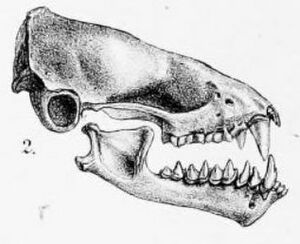Asian particolored bat facts for kids
Quick facts for kids Asian parti colored bat |
|
|---|---|
 |
|
| Conservation status | |
| Scientific classification | |
| Synonyms | |
|
The Asian parti-colored bat (Vespertilio sinensis) is a type of parti-coloured bat. It is known for its unique fur color. This bat lives in many parts of East Asia.
An adult Asian parti-colored bat is about 6–7 cm (2.4–2.8 in) long. Its tail is about 4.3–4.5 cm (1.7–1.8 in) long. Its wings can be about 5 cm (2.0 in) long. You can find these bats from Taiwan to eastern China. They also live in eastern Mongolia and Siberia in Russia. Their home range extends to the Korean Peninsula and Japan. In Japan, they are found on the islands of Hokkaido, Honshu, Shikoku, and Kyushu.
Naming the Bat
This bat was first described in 1880. A German scientist named Wilhelm Peters gave it its scientific name. He called it Vesperus sinensis. The name "sinensis" means "from China" in Latin. This is because the first bat studied was found in Beijing.
For a while, scientists called it V. superans. But in 1997, they found out that the name V. sinensis was given first. So, according to the rules of naming animals, V. sinensis is the correct name.
What Does It Look Like?
The Asian parti-colored bat has a forearm length of 43–55 mm (1.7–2.2 in). Its fur has two colors. The part of the hair closest to its body is blackish-brown. The tips of its hairs are off-white. This gives the bat a "parti-colored" look.
Where Does It Live?
This bat lives in several countries and regions in eastern Asia. These include China and Taiwan. It also lives in Japan, North and South Korea. You can find it in Mongolia and Siberia too.
How Is It Protected?
As of 2019, the Asian parti-colored bat is listed as a least-concern species by the IUCN. This means that scientists believe there are still many of these bats. They are not currently at high risk of disappearing.


